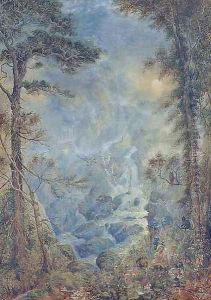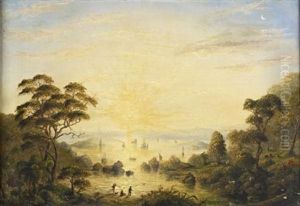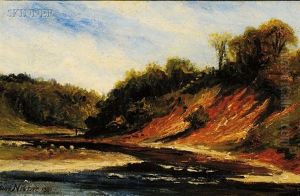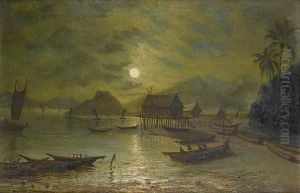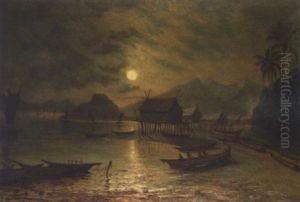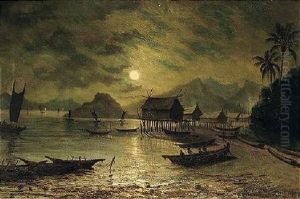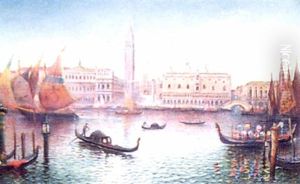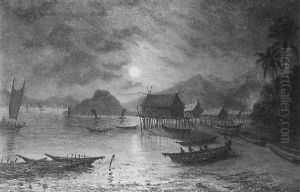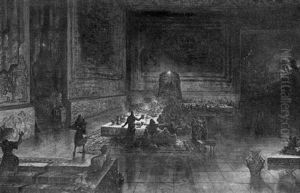Hume Nisbet Paintings
Hume Nisbet was a Scottish-born artist, author, and adventurer whose life and work bridged the 19th and early 20th centuries, encapsulating the spirit of exploration and the romanticism of his era. Born in Stirling, Scotland, on August 8, 1849, Nisbet developed an early interest in art and literature, which would guide his diverse career paths. His artistic talents were nurtured in France and Belgium, where he studied painting, a foundational experience that influenced his later works, both visual and written. Despite his Scottish roots, Nisbet is often associated with Australia, a country that played a significant role in his life and creative output.
In the 1870s, Nisbet emigrated to Australia, drawn by the allure of new landscapes and opportunities. This period in Australia was transformative, providing rich material for his future novels, short stories, and paintings. The rugged landscapes, unique wildlife, and the dynamic between settlers and Indigenous Australians found expression in his work, reflecting both the beauty and the complexities of colonial life. Nisbet's experiences in Australia were not limited to art; he involved himself in various ventures, including teaching and journalism, which further enriched his understanding of the country and its people.
Despite his deep connections to Australia, Nisbet was a globetrotter at heart. His restlessness and insatiable curiosity about the world led him to travel extensively, including trips to Egypt, the Pacific Islands, and back to Europe. These journeys influenced his work, adding layers of exoticism and adventure to his stories and paintings. Nisbet's body of literary work is extensive, encompassing novels, travelogues, and short stories that often drew upon his experiences and observations from his travels. His books, such as 'The Land of the Hibiscus Blossom' and 'The Queen of the Extinct Volcano,' showcase his ability to weave thrilling narratives set in exotic locales, filled with mystery and adventure.
Hume Nisbet's artistic legacy is twofold, comprising his visual art and his written word. As a painter, he is known for his landscapes and seascapes, characterized by their dramatic use of color and light, capturing the essence of the places he loved. As an author, his contribution to the literary world is significant, with his works contributing to the genres of adventure and mystery, often infused with a deep appreciation for the natural world.
Nisbet's life was a reflection of his work: adventurous, prolific, and filled with a constant search for beauty and truth. He passed away on June 4, 1923, in London, leaving behind a legacy that continues to captivate readers and art enthusiasts. His work remains a testament to the power of observation and the enduring appeal of stories that transport us to far-off lands and times.
